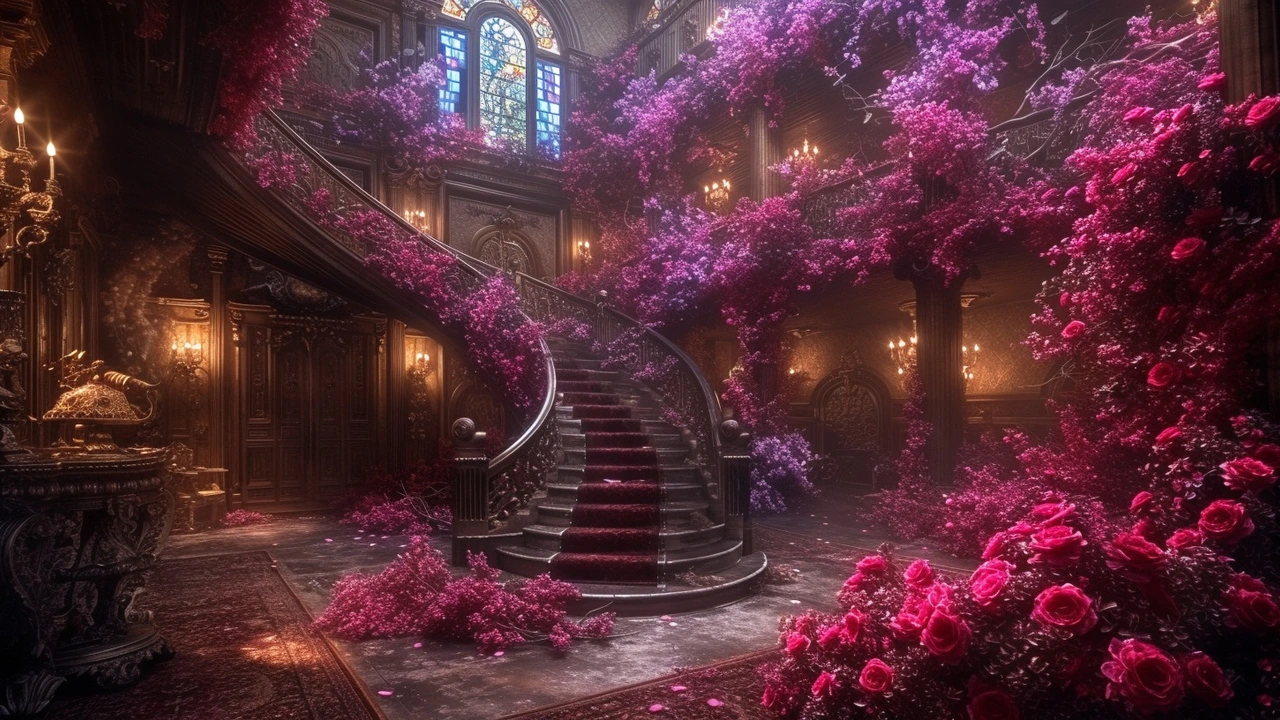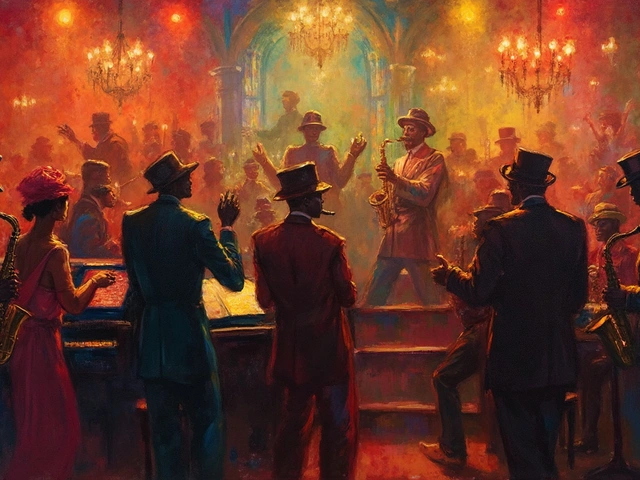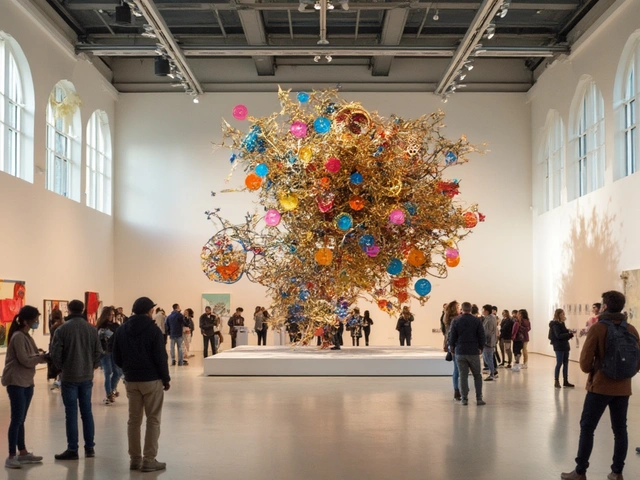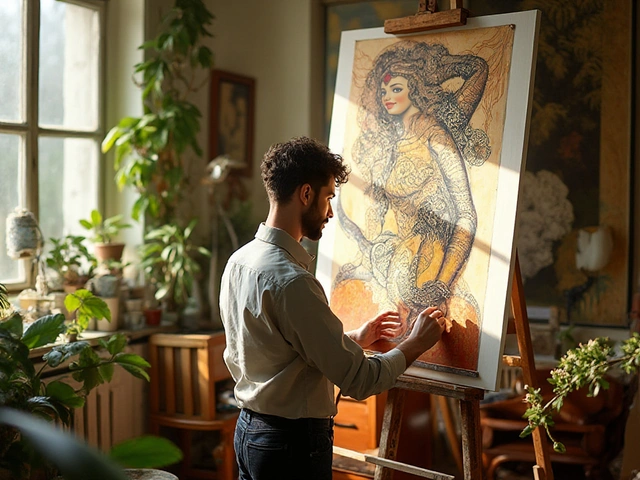The Birth and Evolution of Art Nouveau
As we journey through the timeline of art and architecture, we enter the decorative and organic era of Art Nouveau. Spanning from 1890 to 1910, Art Nouveau was driven by an insatiable desire to break free from the mould of traditional design, an escapee from conventionalism. Much like a butterfly sheds its cocoon to unfurl its kaleidoscopic colours, Art Nouveau emerged, displaying a symphony of intricate designs reminiscent of the natural world.
Art Nouveau, quite literally translating to “New Art” in French, sought to revivify and enliven every aspect of visual life - architecture, interior design, textiles, graphic design, even jewellery. The proponents of this revolutionary movement wanted to wipe away the dominant historical styles of the 19th century and carve out a niche of their own. They loathed the monotony of industrial-made products of the era, feeling that these lacked soul and individualism. Art Nouveau breathed life into their hearts, by rejuvenating the connection to nature and infusing every creation with its essence.
Elementary Elegance: The Characteristics of Art Nouveau
Art Nouveau was no mere style; rather, it was a philosophy, a perspective, a definitive way of perceiving the world. It stressed on the sacred connection between man, nature and art. The key attributes that define Art Nouveau are a testament to this unique viewpoint. Rooted in studies of botanical forms and the structures of animals and insects, the beauty of Art Nouveau design lies in its inherent simplicity and fluidity.
Taking a stroll through the lanes of cities imprinted with the Art Nouveau style, like Paris, Barcelona or Brussels, you’d encounter buildings echoing with the whispers of nature. Delicate floral motifs, undulating lines, lush plant-like designs, and dreamy curves mimic the vibrancy of a blossoming garden. Art Nouveau is an enchanting riot of free-flowing forms, elaborate ornamentation, and radiant colours, held together by the symphony of nature’s melody.
Famous Art Nouveau Architects: Masters of the Art
Art Nouveau architecture is a tribute to the genius of several remarkable architects, who dared to think beyond the traditional, dared to dream, dared to create. These revolutionaries translated the artistic melodies in their hearts onto the canvas of the world. The legacies of the likes of Antoni Gaudi, Victor Horta, or Hector Guimard are etched in the beautiful architectural marvels scattered around the world, each echoing the quintessential elements of Art Nouveau.
Antoni Gaudi, the Catalan genius, blended natural forms into his structures beautifully. Who can forget the spellbinding charm of the Casa Batllo, with its mesmerising façade that tells a tantalizing tale of the sea and its mysteries? Or the Park Guell, with its serpentine bench echoing the waves of the ocean and the vibrant mosaic work paying homage to the colours of nature?
Art Nouveau and its Influence on Modern Design
Even though the reign of Art Nouveau was short-lived, its influence has trickled down to the present times with a relentless force. Its flavor and inspiration can be perceived in various design contexts today, be it poster design, typography, packaging, or in the motifs of the world of fashion design. The jewelry industry also revels in recalling the Art Nouveau design elements, resplendent with intricate stylised flower and leaf patterns, fanciful curvilinear forms, and sensual feminine figures.
For anyone drawn to the aesthetics of nature, who appreciates the melody of organic forms and wants to bring a slice of the outdoors inside — the Art Nouveau style is an alluring, fascinating exploration. Imagine sipping your morning cuppa on an Art Nouveau-inspired couch – its sinuous lines and ornate detailing mirroring the morning dew hanging on to a jade leaf, ready to take the leap onto the earth below. It’s magical, isn’t it?
Art Nouveau and Me, Oliver: A Personal Encounter
Now here’s a fun story from my own life, related to Art Nouveau. The first time I truly saw Art Nouveau brilliance was during my epic European backpacking adventure. It wasn't planned - much like most things on that spontaneous trip! Roaming the streets of Barcelona, aimlessly soaking in the charm of the city, I came face to face with the iconic Casa Batllo. And believe you me, I was awestruck. In that moment, I understood the captivating charm of Art Nouveau.
The façade of Casa Batllo told a tale transcending the boundaries of words; it took me on a magical journey to the underneath of the sea. The legendary Antonio Gaudi used his masterful grasp over Art Nouveau to depict the tale of Saint George and the dragon in an architectural symphony of nature. It made me appreciate the possibilities of artistic expressions in ways I hadn’t imagined before.
Enabling Your Art Nouveau Artistic Journey
If you’re interested in exploring the depths of Art Nouveau, start with small decorative elements – picking out bits and pieces that speak to you, that tell you stories whispered by the wind. It's the best way to start listening to the symphony of nature, art, and architecture that Art Nouveau conducts. The wallpaper, the flooring, furniture, textile design; every little detail can be steeped in the charm of Art Nouveau.
It's all about creating a space that feels like an extension of nature's lap. It's also crucial to remember, anyone can fall in love with Art Nouveau, just like I did that fateful day on the Spanish street. You don't have to be an art historian, an architect, or a designer. All you need is an open heart and a keen eye to observe the symphony of nature, art, and architecture in everyday life.
Here’s a tip for budding Art Nouveau enthusiasts: when analysing an Art Nouveau piece, pay attention to the lines, textures, and the narrative it may be hiding. Each corner, twist, or curl likely has a story or symbolism waiting to be discovered. Don’t rush. Take your time. After all, appreciating art is like enjoying wine; you must let it breathe, to unfurl its true essence.




